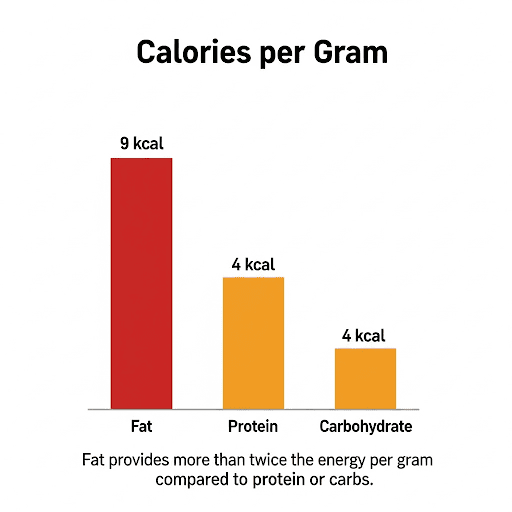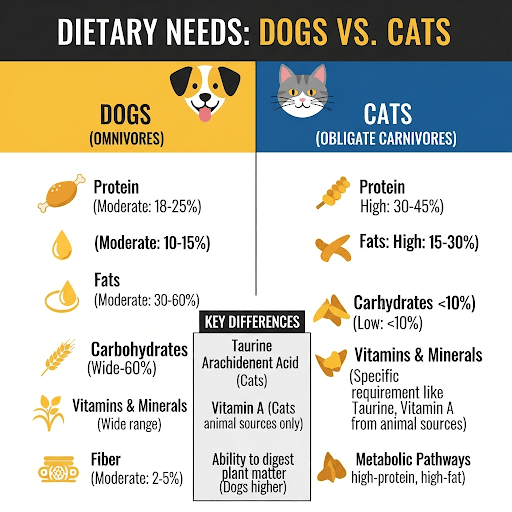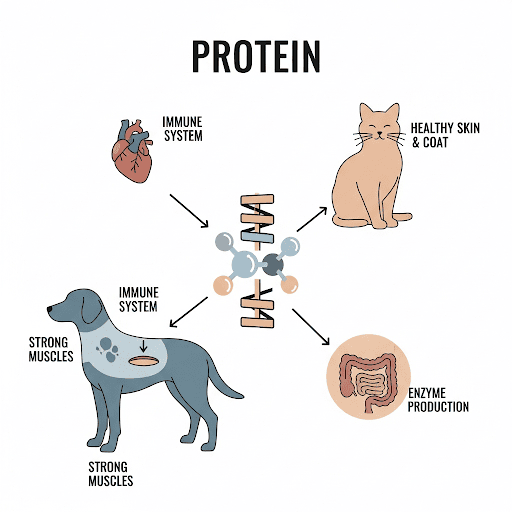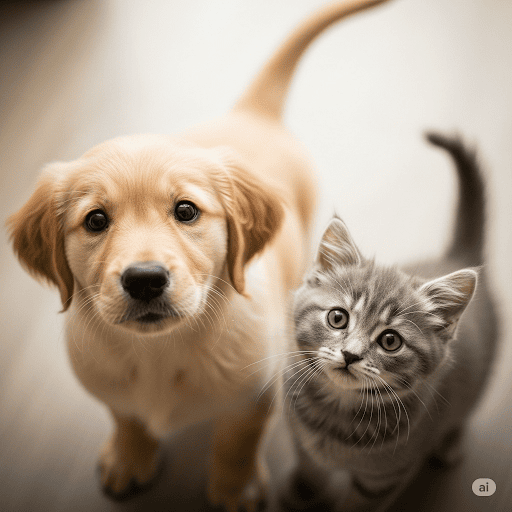Just like a car needs gasoline to run, your pet's body needs fuel. This fuel powers everything from a thumping tail and a mighty roar of a purr to an energetic game of fetch. The energy that makes all of this possible comes from their food, and we measure that energy in a simple unit: the calorie.
The word "calorie" is often surrounded by a cloud of confusion, frequently associated with restrictive diets and weight-loss stress. But a calorie is not a "bad" word. It’s simply a unit of measurement for energy. Understanding this fundamental concept is the single most important key to managing your pet’s weight and ensuring they have the right amount of fuel to live a happy, healthy life.
What Exactly is a Calorie?
At its most basic, a calorie is a unit of energy. When you read the calories in pet food, the number refers to the amount of energy your pet can get from consuming it. This energy is used to fuel every single process in their body:
- Basic Functions: Breathing, sleeping, maintaining body temperature, and brain function.
- Digestion: The very act of breaking down food requires energy.
- Activity: Walking, running, playing, and jumping.
- Healing & Growth: Repairing tissues and building new cells.
The secret to weight management lies in a simple formula: Energy In vs. Energy Out.
- Energy In: The calories your pet eats.
- Energy Out: The calories your pet burns through their daily activities and basic metabolic functions.
If Energy In is greater than Energy Out, the excess energy is stored as fat, and the pet gains weight. If Energy In is less than Energy Out, the body uses its fat stores for fuel, and the pet loses weight. When they are equal, the pet maintains a stable weight. It's that straightforward.
Where Do Calories Come From? The Macronutrient Breakdown
Calories are derived from the three main macronutrients in food—protein, fat, and carbohydrates—but they don't all provide the same amount of energy.
- Fat: This is the most energy-dense nutrient, providing approximately 9 kilocalories per gram (kcal/g). It’s the high-octane fuel, packing a lot of power into a small amount.
- Protein & Carbohydrates: These both provide approximately 4 kilocalories per gram (kcal/g). They are essential energy sources, but they contain less than half the calories of fat by weight.
This is why a high-fat "performance" diet will be much higher in calories than a leaner "weight management" diet, even if you feed the exact same volume.
Different pets need different energy levels. A growing puppy needs more calories than a senior dog, and an active Border Collie needs far more energy from food for cats or couch-potato Basset Hounds. Our pet meal planner does the complex math for you, calculating your pet's specific daily calorie needs based on their age, weight, activity level, and spay/neuter status. It then finds the perfect food and portion to match that target.
Why "Just a Scoop" is a Recipe for Disaster
Here is where many pet owners unintentionally go wrong. They use the same "scoop" for every food, assuming a cup is a cup. But because of calorie density, this is a major mistake. One cup of a performance kibble might contain 500 kcal, while one cup of a light formula might only have 300 kcal.
This is why you must:
- Find the Calorie Statement: Look on the pet food bag (usually near the guaranteed analysis) for the statement listing "kcal/cup" and "kcal/kg." This is your guide.
- Use a Proper Measuring Cup: An 8-ounce measuring cup, not a random coffee mug or scoop, is essential for accurate portioning. "Eyeballing" is one of the leading causes of pet obesity.
- Count the Treats: Treats have calories, too! They should make up no more than 10% of your pet's total daily calorie intake.
(The calorie statement is just one part of the label. Learn to decode the whole thing in our guide [The Calorie Statement: Your Key to Accurate Portioning].)

Conclusion: Powering Your Pet with Precision
Calories are not the enemy; they are the energy that fuels your pet's entire life. Understanding what they are, where they come from, and how many your pet truly needs is the foundation of responsible and loving pet ownership.
Don't fear the calorie—embrace it as your most powerful tool for weight management. By understanding this simple unit of energy, you gain the power to provide your pet with the precise amount of fuel they need for a long, healthy, and vibrant life.
Take the guesswork out of feeding time. Talk to your veterinarian to determine your pet's ideal weight and daily calorie target. Use our meal planner to find the perfect food and portion size, and turn calorie counting from a chore into a simple, daily act of love.


